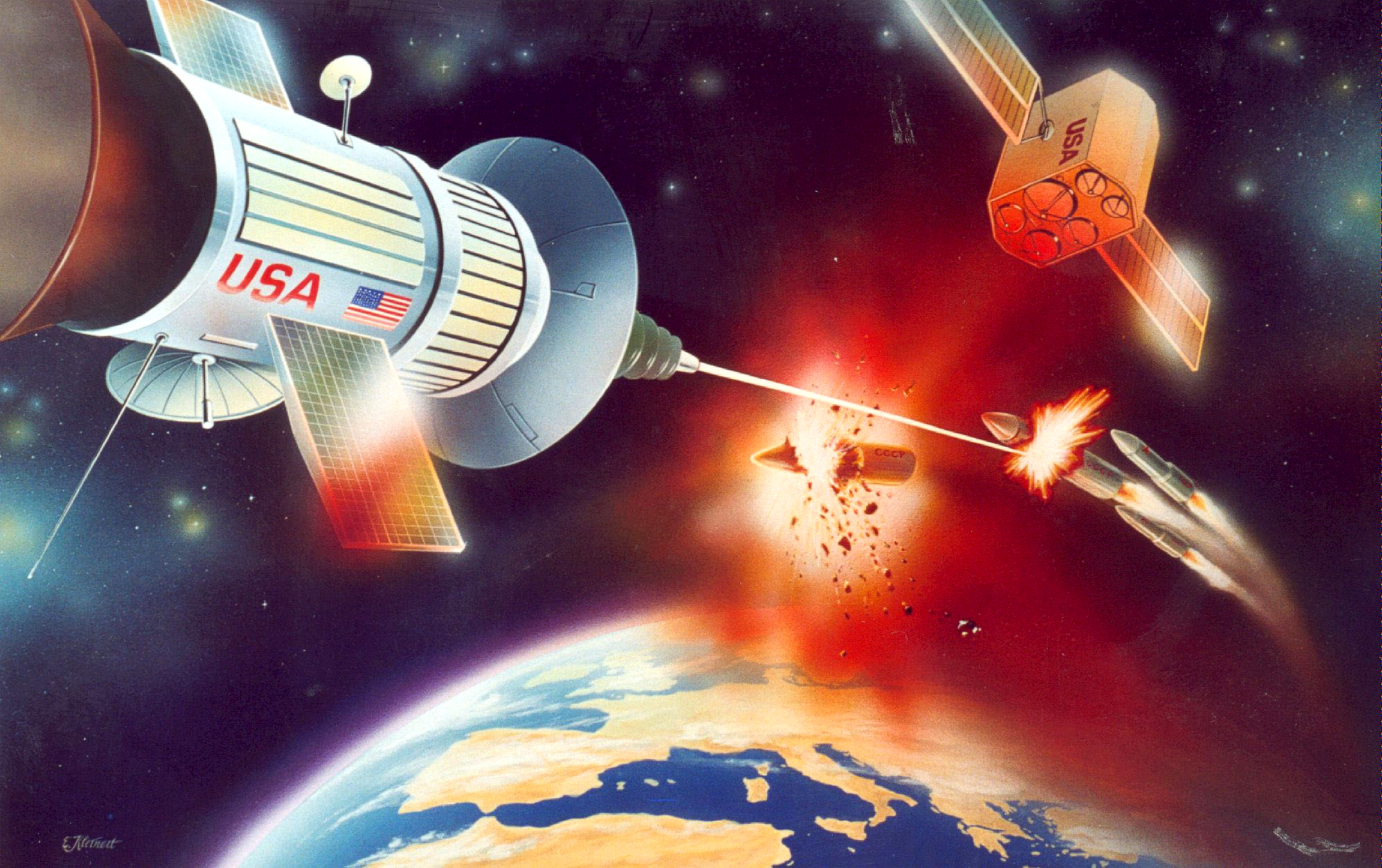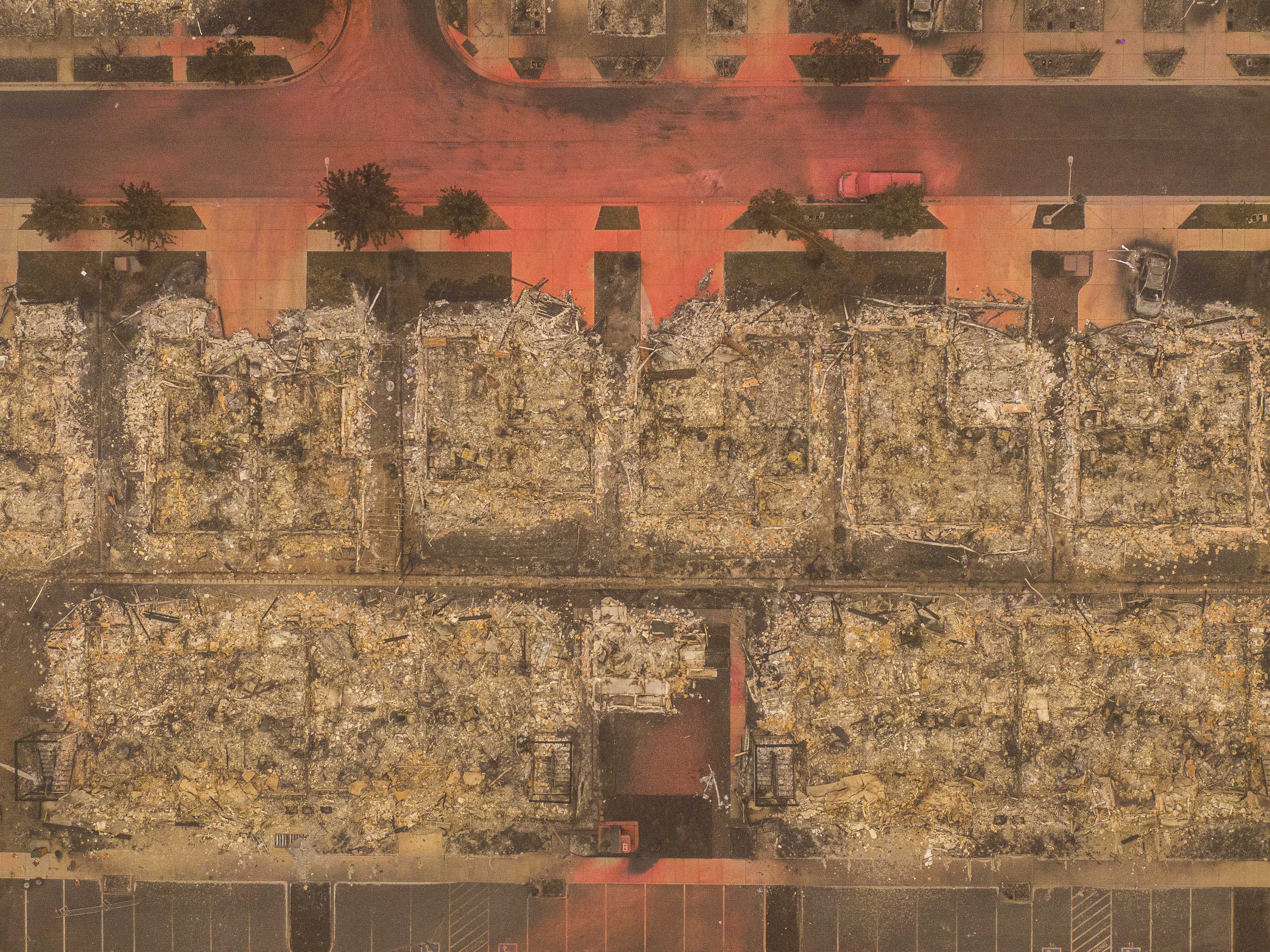A new cold war is unfolding above Planet Earth. Will there be battles in space?
It's a frightening prospect ...

A new cold war is unfolding above Planet Earth. Will there be battles in space? Here's everything you need to know:
What's the conflict about?
China, Russia, and the U.S. are competing for military advantage in orbit. U.S. intelligence agencies warned in February that China and Russia are developing ballistic missiles and other weapons that could be used to reliably target American satellites "in the next few years." Both countries have already successfully tested space warfare technologies. In 2007, China used a missile to shoot down one of its own aging weather satellites orbiting 537 miles above the planet. Russia successfully conducted a test flight for an antisatellite missile in 2015. The U.S. has long possessed such capabilities. In 1985, an American fighter jet successfully launched a missile into a U.S. science satellite. "Space is no longer a peaceful domain," said Deborah Lee James, secretary of the Air Force under President Obama. "There is a real possibility that a conflict on Earth could bleed into space."
The Week
Escape your echo chamber. Get the facts behind the news, plus analysis from multiple perspectives.

Sign up for The Week's Free Newsletters
From our morning news briefing to a weekly Good News Newsletter, get the best of The Week delivered directly to your inbox.
From our morning news briefing to a weekly Good News Newsletter, get the best of The Week delivered directly to your inbox.
Why is that?
Space is strategically vital. About 1,700 active satellites currently orbit Earth — nearly half sent up by the U.S. — and they've become critical to the modern world's economy and daily activities. The Air Force's 33 Global Positioning System satellites provide timing signals used by Wall Street traders and cellphone networks, as well as powering navigation-based apps like Google Maps and Uber. Weather forecasts, video conferencing, instant credit-card authorization, banking connections, and cable television are all powered by satellites. The U.S. military relies heavily on communications and surveillance satellites for virtually all of its activities, from monitoring North Korean weapons tests to coordinating troops in the field. Satellites are constantly scanning Earth to detect strikes against the U.S., looking for the distinctive plumes of a missile launch. "Space is foundational to our way of war," says Gen. John W. Raymond, commander of Air Force Space Command. "And it's foundational to our way of life."
What would space war look like?
It could take several different forms. Programmers could hack into satellites in order to dismantle or commandeer them. Lasers stationed on the ground could also be used to "dazzle," or blind, satellite sensors, rendering them useless. In a more aggressive attack, countries could use brute force to take out rival satellites, either with ballistic missiles or by using "kamikaze" attack satellites to smash into targets. The Russians launched a satellite in May 2014 that appeared to be capable of offensive maneuvers, alarming U.S. intelligence.
A free daily email with the biggest news stories of the day – and the best features from TheWeek.com
How is the U.S. responding?
The military is taking steps to "harden" its satellites from attack. It is planning to launch redundant satellites to act as backups in case critical systems are destroyed, and developing smaller satellites that will be harder to target, as well as defensive satellites capable of detecting or even intercepting threats. Many of the details, of course, are highly classified. In March, President Trump called for the creation of a new branch of the military dedicated to space warfare. "Space is a war-fighting domain, just like the land, air, and sea," Trump said. "We have the Air Force, we'll have the Space Force."
Is Trump serious?
It's hard to say, but he's not the first to suggest it. Secretary of Defense Donald Rumsfeld called for the creation of a "Space Corps" in 2001, but the idea was put on the back burner after the Sept. 11 terrorist attacks shifted the military's focus to fighting terrorism on Earth. Right now, the U.S. Air Force Space Command is responsible for roughly 90 percent of the American military operations in space, employing about 36,000 people around the world. But space force proponents argue that space is an afterthought within an institution built to fight battles on Earth. A new co-equal space force could legitimize space as a vital battleground, the thinking goes, the same way the creation of the U.S. Air Force in 1947 recognized the importance of air power. But the Pentagon reportedly is opposed to the idea of adding another bureaucracy.
What if a war breaks out?
The rules of space warfare are mostly unwritten. The Outer Space Treaty of 1967 bans countries from putting weapons of mass destruction in space, but there's no comprehensive agreement governing other kinds of space weapons or protecting civilian satellites. In 2008, the U.S. rejected a treaty submitted to the U.N. by Russia and China that would have banned weapons in space. When the European Union floated a similar proposal in 2014, it was embraced by the U.S., but China and Russia refused to sign on. The consequences of an all-out space war could be dire. In one scenario, the debris cloud created by obliterated spacecraft could set off a chain reaction that wipes out all of the satellites in orbit, ringing Earth with space junk and rendering space unusable for generations. "The challenges of war fighting in this domain are not really understood," says Todd Harrison, director of the Aerospace Security Project at the Center for Strategic and International Studies. "We don't have any history to go on."
The first 'Space War'
In 1991, Operation Desert Storm proved the vital military importance of space. Coalition forces relied on the Air Force's nascent GPS network to cross virtually uncharted tracts of desert left undefended by Iraqi commanders, who believed that no mechanized weapons or troops could cross this hostile terrain. The use of GPS navigation enabled U.S. and allied troops to outflank Saddam Hussein's military in a sweeping maneuver that became known as the "left hook," paving the way for the swift liberation of Kuwait in a ground war lasting roughly 100 hours. Infrared warning satellites also rendered the Iraqi army's Soviet-era Scud missiles virtually useless by allowing coalition troops to accurately predict where they would they land. Meanwhile, coalition artillery used GPS to devastating effect while bombarding Iraqi positions. "It really was the first time that we took strategic space information and integrated it into a theater of operations," Gen. John W. Raymond, commander of Air Force Space Command, told Popular Mechanics. "There's nothing we do today, there's not a sailor, soldier, or Marine that operates in their domain that isn't using space capabilities to conduct their mission."
-
 Jaguar Land Rover’s cyber bailout
Jaguar Land Rover’s cyber bailoutTalking Point Should the government do more to protect business from the ‘cyber shockwave’?
-
 Russia: already at war with Europe?
Russia: already at war with Europe?Talking Point As Kremlin begins ‘cranking up attacks’ on Ukraine’s European allies, questions about future action remain unanswered
-
 Crossword: October 5, 2025
Crossword: October 5, 2025The Week's daily crossword puzzle
-
 Are zoos ethical?
Are zoos ethical?The Explainer Examining the pros and cons of supporting these controversial institutions
-
 Will COVID-19 wind up saving lives?
Will COVID-19 wind up saving lives?The Explainer By spurring vaccine development, the pandemic is one crisis that hasn’t gone to waste
-
 Coronavirus vaccine guide: Everything you need to know so far
Coronavirus vaccine guide: Everything you need to know so farThe Explainer Effectiveness, doses, variants, and methods — explained
-
 The climate refugees are here. They're Americans.
The climate refugees are here. They're Americans.The Explainer Wildfires are forcing people from their homes in droves. Where will they go now?
-
 Coronavirus' looming psychological crisis
Coronavirus' looming psychological crisisThe Explainer On the coming epidemic of despair
-
 The growing crisis in cosmology
The growing crisis in cosmologyThe Explainer Unexplained discrepancies are appearing in measurements of how rapidly the universe is expanding
-
 What if the car of the future isn't a car at all?
What if the car of the future isn't a car at all?The Explainer The many problems with GM's Cruise autonomous vehicle announcement
-
 The threat of killer asteroids
The threat of killer asteroidsThe Explainer Everything you need to know about asteroids hitting Earth and wiping out humanity